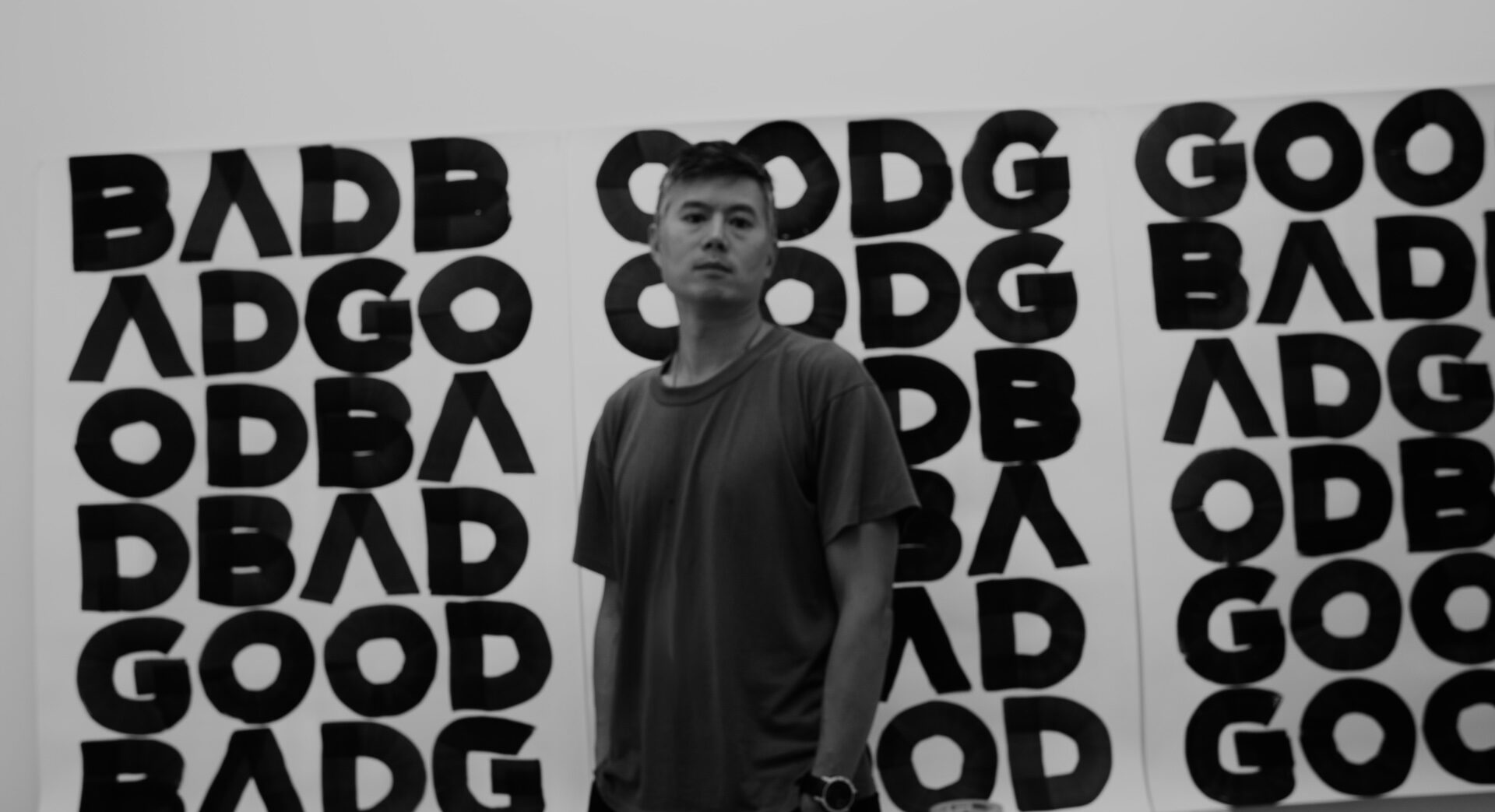
Enhancing the Visual Space of Art | Interview with Seldon Yuan
We are journeying toward the depths of the innovative poet and visual artist Seldon Yuan’s world.
Playing with the spheres of art is exactly what artist Seldon Yuan is successful at. Deriving from his personal history; Yuan has formed his art on enhancing the spaces to create art and blended the elements of absurdity and surrealism with a unique way of using words to reflect them on the visual plane. As a New York-based artist, Yuan has been educated in various art schools across the world, such as Carnegie Mellon University, Hunter College and Beaux-arts de Paris l’ecole nationale supérieure. With a greatly multifarious portfolio, including a scale of arts from poetry to furniture and performance, he presents an inspirational example of a multifaceted artist. As Luxiders Magazine, we wanted to discuss Seldon’s stimulating perspective and experiences on art in detail and we conducted a galvanizing interview with this valuable artist.
Luxiders Magazine (L)
Seldon Yuan (SY)
L: You call your art a matter of personal history. What was the story of yours that led you to convert your personal experiences into hybrid artwork where you combine words with visuals?
SY: When I was young I had two separate practices: Writing and visual art. Much of my work relates to personal experiences which are then translated into visual art or writing. At one point, I felt the written word on a page just fell short of what I wanted to express and explore in both content and in formal terms. I wanted to grow the complexity and meanings. Eventually, I found a unique way to combine text and image that wasn’t an illustration, where each part contributed to something new and expanded the meaning beyond what each part could do alone. I felt like there were new places to take text/words in a visual space that no one had done quite yet, which in part was about incorporating how we read and how the way we read relates to the content. But it was also about creating a unique in-person personal experience that could not be reproduced by just an image or by reading words on a page.
L: Creating quite unique pieces, did anyone portray as an idol or influence for you when your personal style was developing?
SY: I had a lot of influences growing up in art and music and books, but most don’t feel as important to me as they once did, though they did contribute to who I am today. I realized at one point the works that truly spoke to me were the ones that made me feel less alone in the world such as The Catcher In The Rye by J.D. Salinger, books by Charles Bukowski, Kind of Blue by Miles Davis, paintings by Francis Bacon, art by Tom Friedman, skateboarding, and so on. Looking back, that was what I tried then subconsciously (now consciously) to do for myself when I made work and hoped it would do for others. Eventually, I came to understand I needed to evolve to find my own personal voice, ideas, and style… that it was okay to do that and that is absolutely necessary.
L: Taking a look at your artworks, the words come up as very intimate and sincere to observe. Do you prefer leaving the poetry as natural as it is when placing it to a synthesis with visuals or do you ever revise your poetry to fit into the concept?
SY: The poetry/phrases are always written first. It is usually the spark that starts a work. Often times I free write and/or journal either by writing by hand or typing to try to generate something interesting. Then I see how it could be put into a visual context in a way that is not an illustration. How can the visual and the words each add something special and express something new that each part alone could not do?
L: Yet you define it ‘personal’, your art carries a social importance to us. What social messages do you raise through your works?
SY: Well with the more recent drawings I play with ideas about various emotions, death, existential issues, time, Buddhism, and nihilism but usually with a dark sense of humor. For me it is often about finding a certain peace and understanding with the brevity, challenges, and absurdity of life.
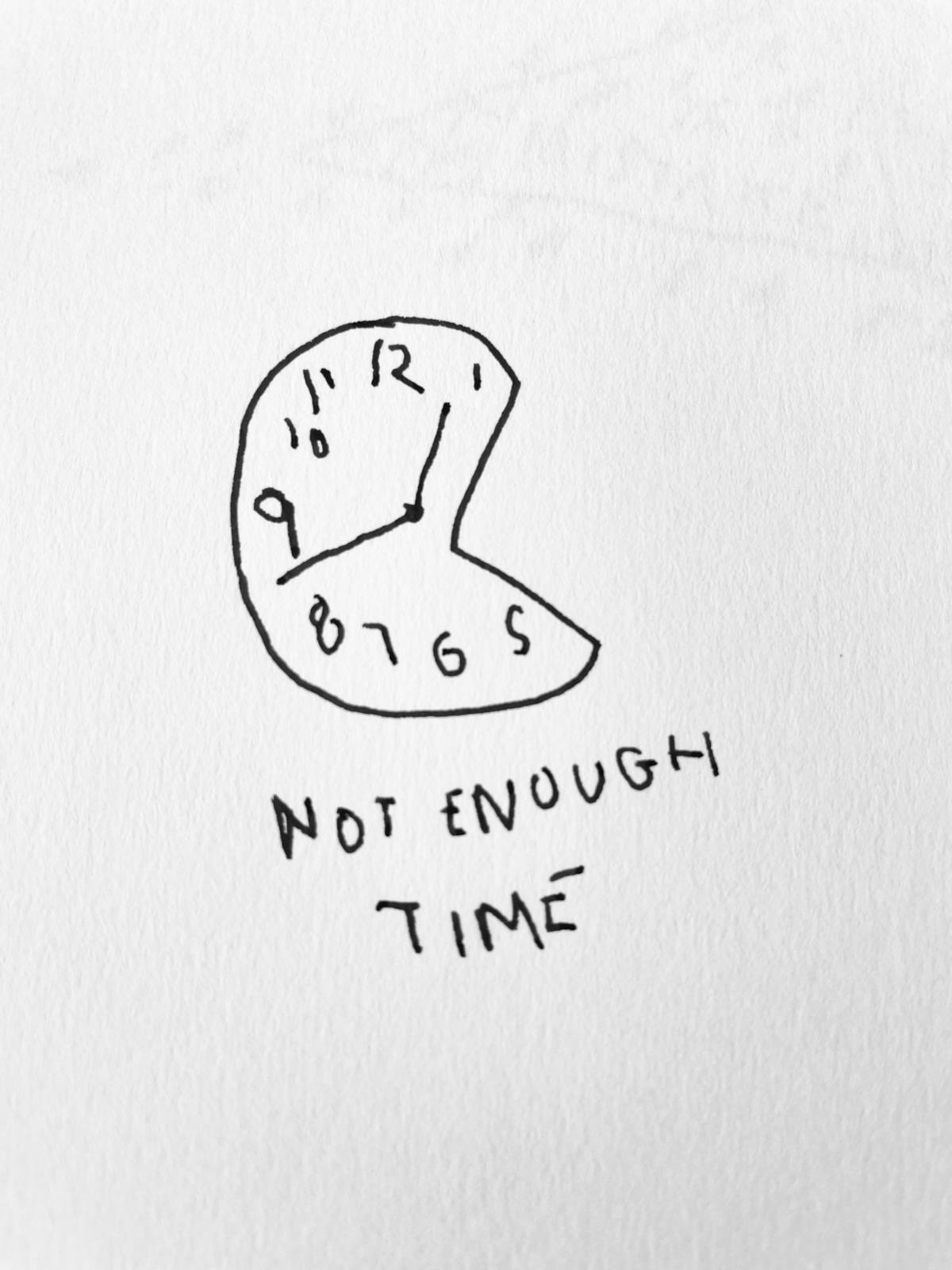
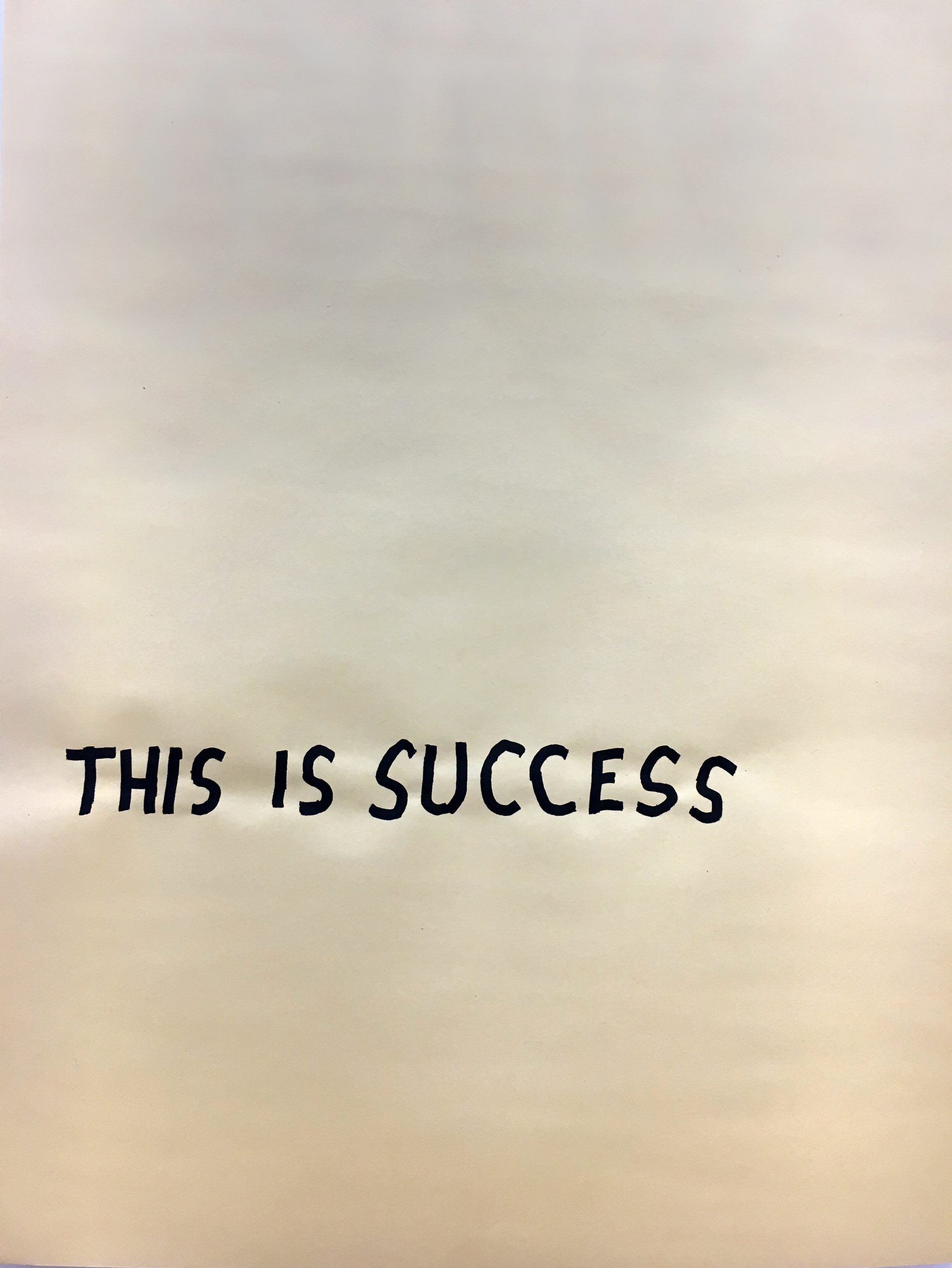
L: I am looking at your visual poetry works and coming across the one saying “This is success.” on yellow paper. You also mentioned the theme of “perfect” in the same series. As an artist, how do you define success and perfection in art? Do you derive from the reflection of viewers and readers, or from the inner satisfaction when producing your art?
SY: My mindset has changed over the years. I used to not care as much and I was focused more on being innovative and had more formal concerns. Now I’m happy if people laugh because I know it is a more honest reaction to the work than “It’s nice,” “It’s beautiful,” and “I really like it.”
As for how I define success… Success at this point is just having the ability and time to continue to make something that interests me and nothing else. Doing it is the reward. However, that being said it would also be nice to find more financial success with the work!
With regards to “perfect,” I’ve tried to embrace the imperfect more and have more humanity visible in the work. With the work “everything is perfect” it could be interpreted in a few ways. One could be that the more you say it the less truthful it sounds. Another is that it is so messy and imperfect that that is what makes it perfect. Or it could be that this is a falsehood because it is rendered so sloppily. It’s up to you to interpret it.
L: Let’s talk about some messages we liked, let us know what exactly would you like to mean with them.
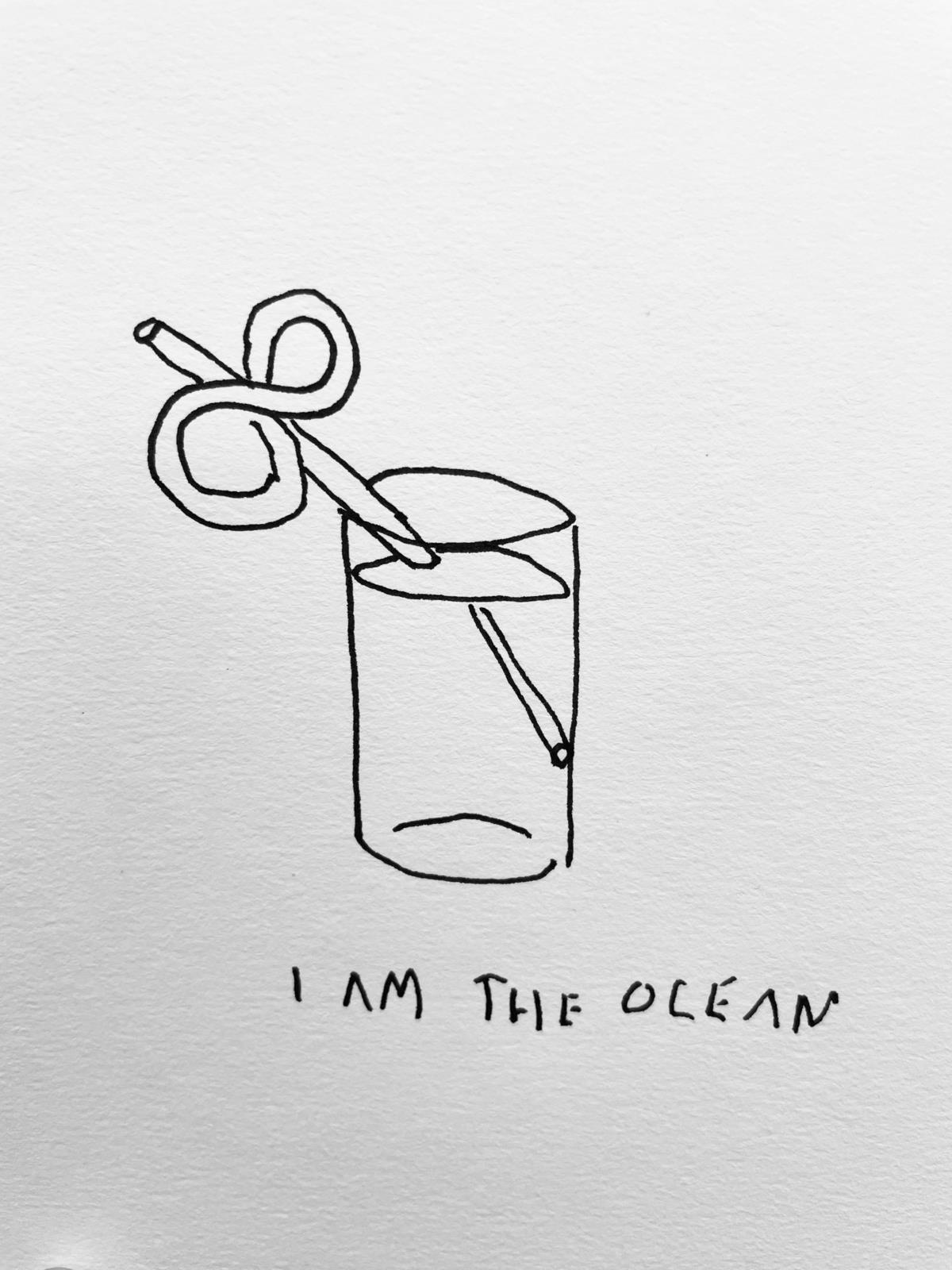
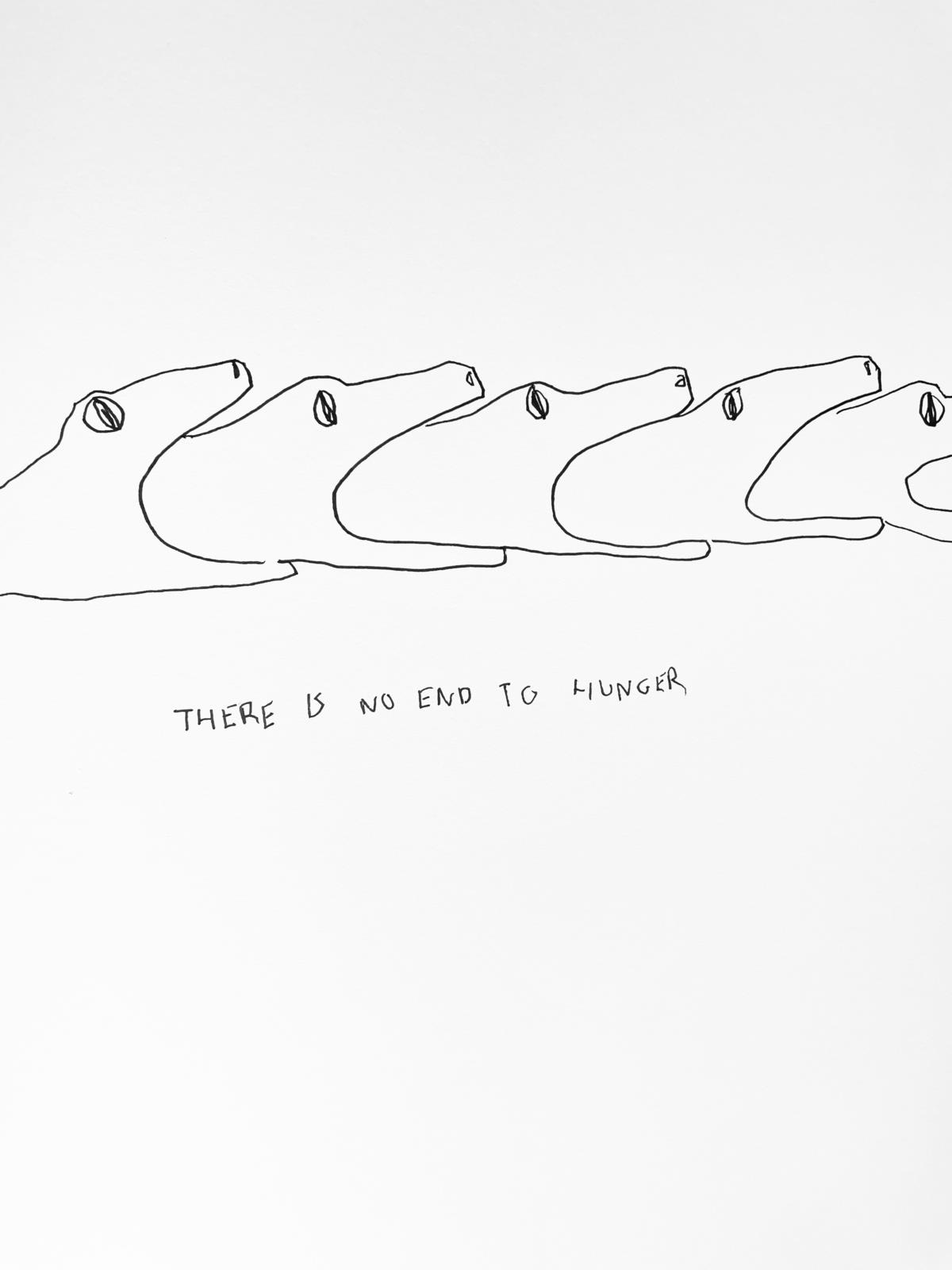
L: “I am the ocean”
SY: To me, the drawing seemed initially seemed funny: a cup of water with a child’s crazy straw in it that says, “I am the ocean.” The cup of water considers itself a huge almost limitless deep powerful body of water. I play with the idea that we could be or want to be bigger than we are. Whether that is justified or just delusional is open to interpretation.
L: “Not enough time”
SY: For me, this drawing of an analog clock face with a slice removed with the word “not enough time” refers to the lack of time I have in my life and where it goes. It reminds me of the old video game character Pac-Man that must eat all the pellets, but instead, there is some allusion to eating time. But there is also the idea of chunks of time that are literally missing and do those missing chunks of time even count anymore if there are no numbers there?
L:“There is no end to hunger”
SY: I wrote this phrase long ago for a poem but somehow thought it was funny to pair it with a line of snakes eating snakes for some reason. Obviously, the idea is that while we are alive we will always be hungry at some point. When will any of those snakes feel full even as there are snakes inside snakes inside snakes? Would they ever stop eating the one in front of it? Do the snakes stop eating as they are being eaten? Is there a point in eating while they are being eaten?
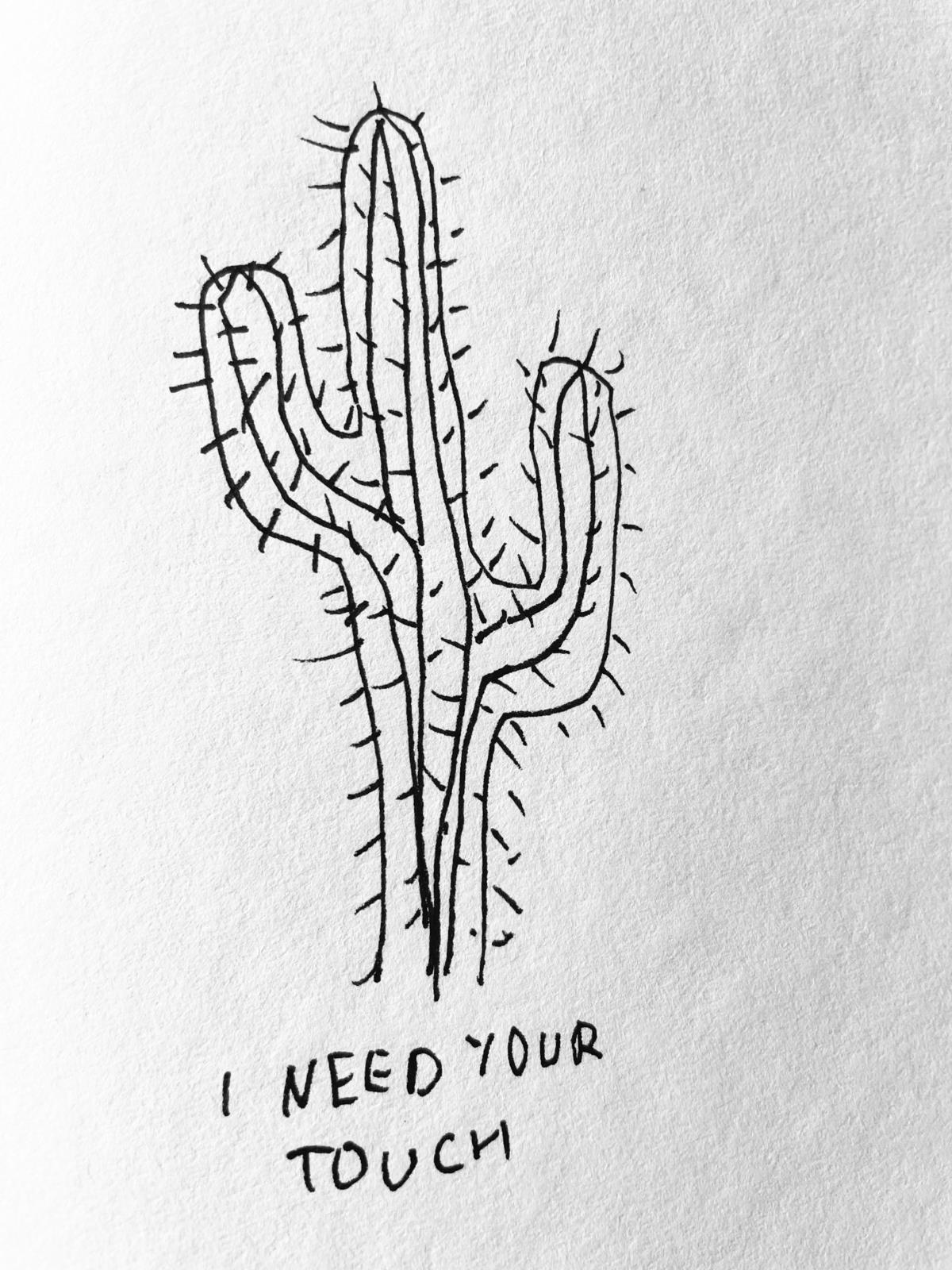
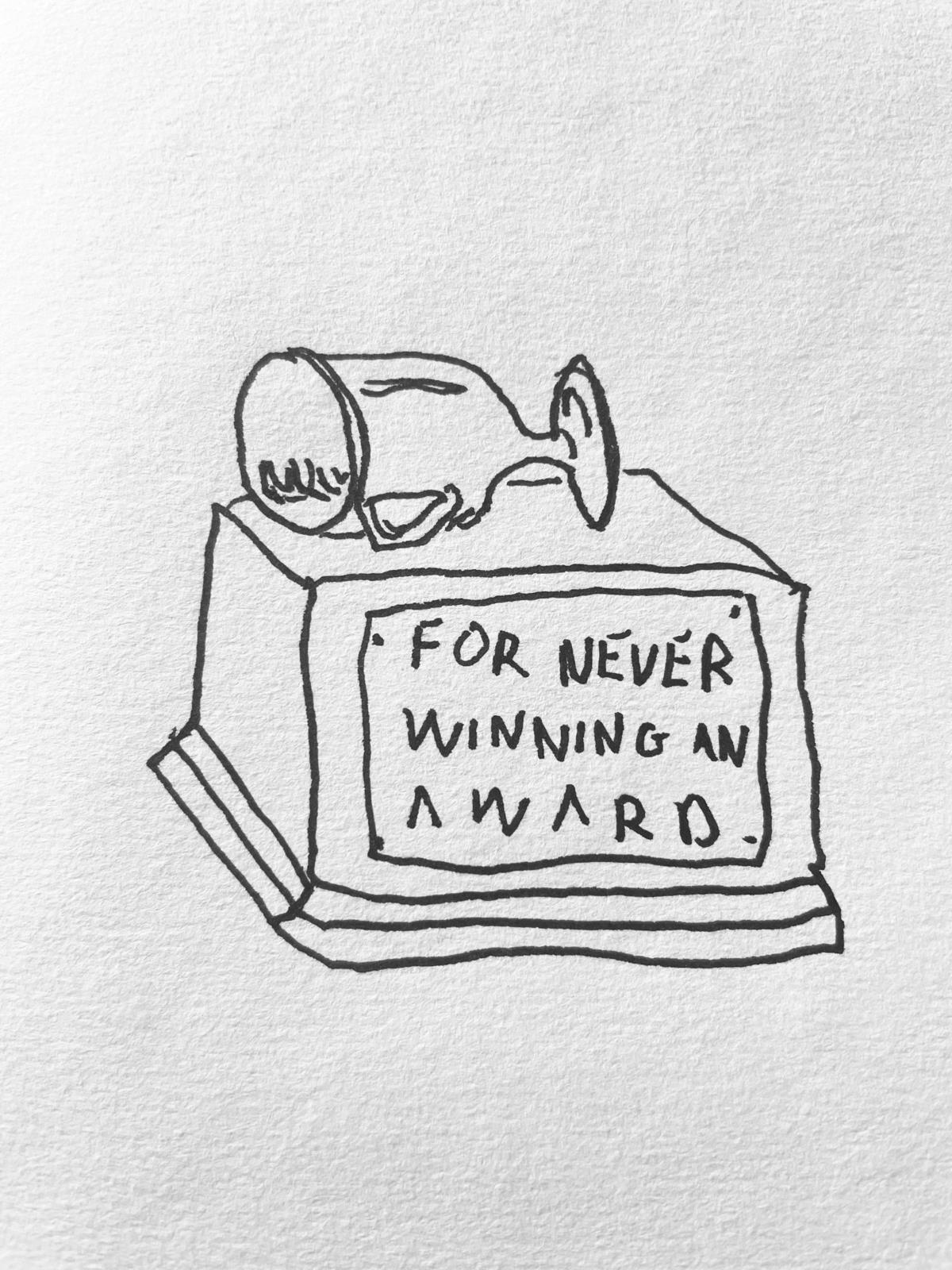
L: “I need your touch”
SY: I often like to use plants and other things in the natural world as stand-ins for people and emotions. Clearly, it is ironic that a cactus with sharp spines would say “I want your touch.” But is the request a trick is it sincere? Or is it some subconscious self-sabotaging behavior?
L: “For never winning an award”
SY: I thought it would be funny to have an award for never winning an award, which of course has the award fallen over onto its side.
You are currently viewing a placeholder content from Default. To access the actual content, click the button below. Please note that doing so will share data with third-party providers.
More Information
You are currently viewing a placeholder content from Default. To access the actual content, click the button below. Please note that doing so will share data with third-party providers.
More Information
L: Do you have any projects that are upcoming in the future and what will be your main focuses and sources of inspiration for them?
SY: Yes. I have a few completed book projects I am looking for publishers to put out: a novel, an illustrated children’s book (or maybe it’s more adult?), a poetry book, and a map book on the urbanization of NYC, as well as other book projects in various states while also continuing to make art. I’m also working on putting a book of the drawings together. I also have a tote bag/backpack company called SSCY for which I am also creating new products for. I’m always trying and get out as many ideas as possible.
VISIT THE ART WEBSITE OF SELDON YUAN
FOLLOW SELDON YUAN ON INSTAGRAM
+ Interview:
Tolga Rahmalaroglu
Luxiders Magazine Contributor








